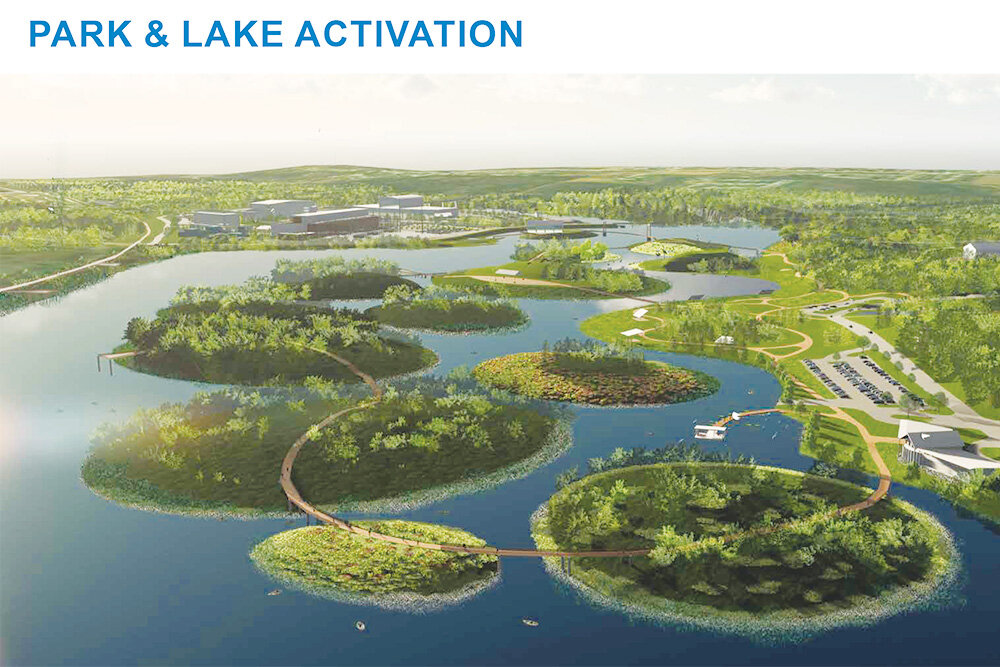YOUR BUSINESS AUTHORITY
Springfield, MO
YOUR BUSINESS AUTHORITY
Springfield, MO

It wasn’t a thing that happened in 2023. Rather, it was an idea of what could happen in the near and distant future on 1,000 acres of city land.
A plan for ecological improvements and recreational, cultural and natural amenities for Lake Springfield and the surrounding area was unveiled in a public meeting Oct. 12.
The $1 billion-$1.2 billion vision for the land – all owned by City Utilities of Springfield – was drafted by engineering and consulting firm Crawford, Murphy & Tilly Inc. with input over the course of a year from area residents, as well as business owners, developers, and school, park and nonprofit officials.
The area was identified as a redevelopment opportunity in the city’s Forward SGF comprehensive plan, and creation of the lake plan was funded through an $800,000 grant from the U.S. Department of Commerce’s Economic Development Administration, $100,000 from the Hatch Foundation, $60,000 from City Utilities and $40,000 from the city of Springfield’s Environmental Services Department.
Steve Prange, vice president of CMT, described the plan as “whetting the appetite” of the development community.
“We’re trying to inspire people to invest in this area,” he said. “Development will tell us what the right answer is there.”
The plan addresses the ecological needs of the lake, which was artificially formed by damming James River in 1957 for use of City Utilities as a cooling water source for steam generators at the James River Power Plant, which provided electricity for the city through the burning of natural gas and coal. It was decommissioned in January 2021.
Over nearly seven decades, silt has built up in the lake, and the report estimates the lake is on track to become a wetland in 20-50 years. The plan recommends dredging up portions of the lake into islands that would be joined by an elevated boardwalk trail, with space for kayakers and canoers to glide underneath.
The plan separates the land into zones where recommended uses include a retreat conference center, corporate challenge areas and a cultural education center, with trail connections throughout. Prange said the plan doubles down on the boathouse and marina: “We think it needs to be two to three times bigger than what it is.”
At the site of the decommissioned power plant, an entertainment district or adventure hub would make use of the building, with different job, visitation and revenue estimates for each.
Prange described the plan as a vision that is subject to change, but if enacted as written, it would create 946-1,091 jobs at the site in year 10 of the development, and annual room night estimates would be 34,801-62,665. Taxes generated in year 10 would be $8.1 million-$9.5 million.
Gary Gibson, CU president and CEO, said the utility is committed to recouping the investment of customers who have paid for the property for the last 75 years.
“The possibilities are so wide for what you could do out there,” he said. “I do think it’s going to take that public-private partnership to make something really special on the south side of town.”
Led by a team of gardening experts, Harvest Grow Supply offers know-how alongside more than a thousand products.